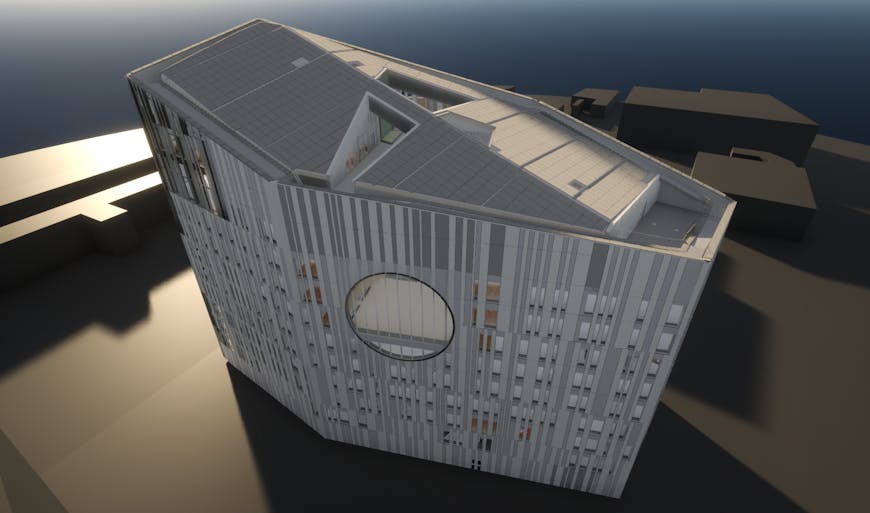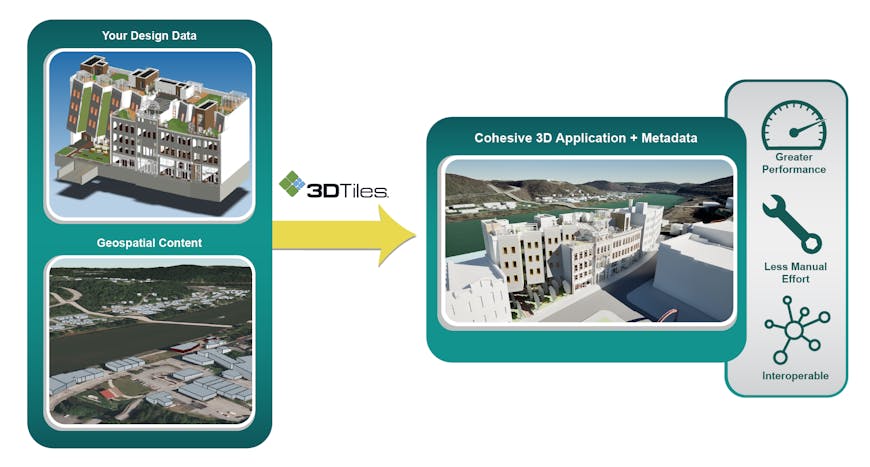Coming Soon: Cesium Add-In for Autodesk Revit
Development is progressing on a new open source Add-In for Autodesk Revit that will be released later this year. The Add-In integrates with Cesium ion to generate 3D Tiles, further connecting architecture and geospatial.
Cesium’s Revit Add-In provides a simple workflow for exporting your design data to 3D Tiles available on Cesium ion. Sample data courtesy of Autodesk.
The Cesium Revit Add-In is currently being evaluated by participants in Cesium’s AECO Tech Preview Program, which provides early access to software like the Revit Add-In and Cesium’s Design Tiler.
Program participant Erik Narhi, Computational Design Lead at Buro Happold Engineering, used the Cesium Revit Add-In to easily convert existing Revit design data to 3D Tiles and bring that data into Unreal Engine.
“The Cesium Revit Add-In adds another layer to the potential of 3D Tiles and Cesium for AEC workflows,” Narhi said. “We are excited to explore how we can leverage it as we continue to push the mainstreaming of game engines and interactive 3D workflows for AEC project design, analysis, and delivery.”

Cesium’s Revit Add-In easily converts your design data to 3D Tiles. Image courtesy of Buro Happold Engineering.
Cesium’s Revit Add-in was designed to complement existing workflows by connecting Revit to Cesium ion with an easy-access, one-click export capability. Much like the Cesium 3ds Max plugin released in 2020, the Revit Add-In connects directly to your Cesium ion account allowing you to accurately place and visualize your designs in real-world environments.

The Revit Add-In, combined with Cesium’s Design Tiler, improves workflows and capabilities placing AECO content in a 3D geospatial context. Sample data courtesy of Autodesk.
Cesium's Revit Add-In converts a project's internal representation using the Cesium ion Design Tiler into 3D Tiles. The Design Tiler is optimized to support the properties of the BIM data and the metadata, materials, and textures within the Revit design file. To improve streaming and rendering performance, the tiling process detects shared geometry and instances them in the exported 3D Tiles. The Revit Add-in allows AECO teams to send performant, interactive digital twins to partners over the web or into native runtime engines like Unreal Engine, Unity, or NVIDIA Omniverse via Cesium ion. The conversion and upload to Cesium ion is done transparently, letting architects and other AECO professionals focus on their designs and workflows.
Exported 3D Tiles include your design data geometry, materials, textures, and metadata to support visualization and analysis. Sample data courtesy of Autodesk.
By building integrations through open standards and collaboration with software companies like Autodesk, Cesium will continue to improve workflows for building AECO-focused applications that combine project plans with accurate 3D geospatial data.
As we move closer to a full release of the Revit Add-In and Design Tiler, we would love to hear your suggestions on the Cesium Community Forum.